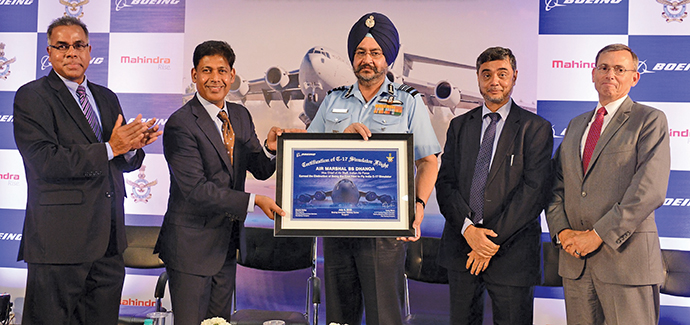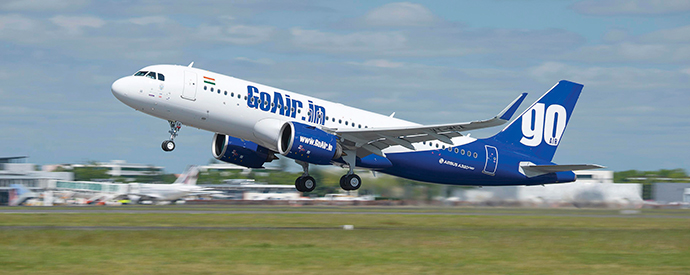Aviation in India has indeed come a long way since 1911 when the country’s first flight between Allahabad and Naini carried 6,500 pieces of mail a mere six miles on a Humber biplane. The International Air Transport Association predict that 378 million passengers will pass through India’s airports by 2034, elevating its rank within the aviation market to the top three globally. As the number of low-cost carriers has grown, Airbus forecasts India will need over 1,600 new passenger and freighter aircraft in the next two decades to meet growing demand.
Growth in aviation will accentuate the demand for maintenance and repair organization (MRO) facilities in India. The Ministry of Civil Aviation reported the MRO market in India to be around US$ 800 million, with only 10 percent of the repair activities being conducted in-house and the rest going to Sri Lanka, Singapore, Malaysia, and UAE. The government is developing India as an MRO hub in Asia, attracting business from foreign airlines through incentives such as exemption from customs duty on tool-kits, allowing easy import/export of service parts, longer permission for carriers to stay in India for MRO-related work, providing visas promptly to pilots/technical staff, and reducing overall taxes.
During the last decade, around 50 foreign MROs received approval from the Director General of Civil Aviation (DGCA), and many of them have started investing in the country. Airbus plans to invest US$40 million to set up a pilot and maintenance training center in New Delhi, which will be operational by the end of 2017. With the ambitious target of becoming the third largest aviation market by 2020, India offers opportunities for carriers, manufacturers and other related ancillary industries.
Government Support and Declining Costs
The Government of India released the National Civil Aviation Policy (NCAP) in June 2016. The new policy will help revive some of the 100-plus non-functional airports in India, improve connectivity across the country, and further simplify the rules making it easier for foreign players to participate.
Another area of focus is the increasing number of public-private partnerships (PPP) to develop the sector with government-backed financing, concessional land allotment and tax holidays. With a total investment of approximately US$3 billion, airports in Bengaluru, Cochin, Delhi, Hyderabad, and Mumbai were developed under the PPP route. These airports have improved overall efficiency, transformed the passenger experience and delivered an attractive rate of return for investors, presenting opportunities for players looking to enter the Indian market through the PPP approach.

The plummeting aviation turbine fuel (ATF) price served as the primary catalyst for growth within the aviation sector in the past one to two years. Indian carriers used to spend as much as 50 percent of their total costs on ATF, and now, with reduced prices, it is down to 40 percent. Other factors augmenting the sector tailwinds include the expanding middle class, the modernization of existing airstrips, relaxation of foreign direct investment rules, growth in tourists and easing visa requirements.
Risks and Potential Rewards
However, along with this exuberance, much of the civil aviation market still carries substantial risk. All Indian airlines are heavily indebted, with India’s national carrier, Air India (nicknamed “the Maharaja”) having lost nearly US$1 billion annually over the last four successive years. The ailing airline is now surviving on a US$5-billion government bailout package.
Continuous discussion with the government is paramount to streamline this sector and fix the airport infrastructure bottlenecks such as problems in environmental clearance and skewed land acquisition policies. Unfortunately, little action is being undertaken by Indian authorities to increase airport capacity to keep up with the rapid market expansion happening in the last decade. India may fail to take full advantage of the promising aviation market if policy reforms and structural issues remain uncertain. With high ATF taxes (60 percent costlier than global prices) and airport infrastructure fees, India’s aviation industry operates in the world’s most costly environment. High input costs, heavy fuel surcharges, intense competition and an arcane regulatory environment are threats to the entire aviation value chain, dampening growth prospects.
Access to technology remains the biggest struggle for Indian aerospace manufacturing companies, presenting an opportunity for collaboration with foreign companies. The industry is in the early stages of development and needs to keep pace with global aerospace technology across the value chain. Over the last couple of years, the Indian government has consistently worked on creating positive economic policies and actively lured global investors with several incentives. As operating conditions and ease of doing business improves across India, more and more private global companies within the aviation and defense sectors are expected to forge partnerships with local Indian companies.
Sreehari Marar is a Senior Research Analyst in the India office of Tractus Asia Limited, a leading FDI advisory and site location strategy firm in Asia. He can be contacted at sreehari.marar@tractus-asia.com.
